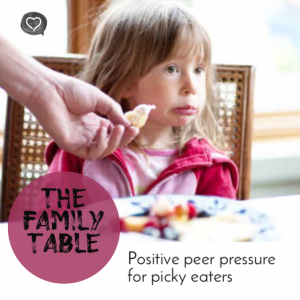We all want to raise children who will make healthy choices about food as adults. As is true with so many aspects of parenting, there are many steps we need to take to reach our goal and a wise parent starts working on this in infancy. “Begin as you mean to go”, first introduced to us in Preparation for Parenting and revisited successively in the following courses, has many practical applications at the family dining table.
Three of our teen and young adult children are currently home alone, looking after each other while we are traveling overseas for three weeks. The success of this time has been years in the making. What kind of choices will they make to feed themselves while we are not there?
From our Preparation for Parenting days, the Ezzos encouraged us to be mindful of the importance of the ‘why’ behind how we approach feeding our children. Food (bottle or breastfeeding) should not be the way we consistently block crying. As our children grow into the toddler and preschool years, it can be easy to use food in responding to discipline issues – either as a bribe to get good behavior or to stop whining. But neither of these will produce good long-term fruit in your child’s behavior or your parenting skill set. Instead, food and mealtimes should be used as a wonderful opportunity for training, reinforced by the positive peer pressure found in family mealtimes.
Here are some ways to build good habits:
- As your pre-toddler is introduced to new foods, encourage them to taste a little from the family table. When starting solids, some babies will initially object to new tastes and textures. Do not take initial rejections as a life-long dislike. Try again at another meal.
- Sometimes family meal times will not line up with a pre-toddler’s mealtime routine but a few mouthfuls from the family meal is a good investment in future participation. Trying some of Daddy’s food can be a very appealing activity for young children.
- Don’t get into the habit of disguising vegetables in other foods all the time. Allow your child time to try different tastes and textures regularly. Present them in a variety of ways. Keep trying.
- What you have in the pantry and refrigerator will be what your children get used to eating. Help them make healthy choices by not buying junk. It will help you too.
- Treats should be treats. Enough said! We are so spoiled with choice.
- When introducing unfamiliar foods, put just a couple of bites of something new on their plates. Require them to have one bite. We saw success in this area with our son who hated mushrooms. With time and patience, they are now his favorite vegetable. It is OK to have some foods they are not so keen on, but we still required them to have a small portion of something they didn’t yet like.
- What about Mom and Dad’s own habits as a role model? We set the tone for table manners as well as attitudes about trying new foods. Little eyes are watching.
- Participating in preparing food helps encourage the desire to try it. It can be messy and time consuming at first, but is well worth the effort in the end. Your future son- or daughter-in-law will thank you.
- Don’t use dessert as a bribe, but you can be matter-of-fact about not having any dessert until a reasonable attempt has been made on the main course.
The family table is a place of memories. Be intentional about both the food choices and atmosphere. Family fellowship around food results in fond memories. The tastes and smells, along with laughter and intentional conversation, both every day and on special occasions, builds through their growing up years. Don’t underestimate the power of eating together regularly.





Leave a Reply